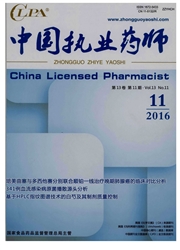

 中文摘要:
中文摘要:
The overuse of injection exists more than 20 years since economic reform in China.It is a persistent problem and seems becoming a new challenge in the new health reform period.This study was designed to assess the effect of national essential medicines policy(NEMP) on injection use at primary health facilities in China by investigating their prescription information.Questionnaires were designed and disseminated to collect empirical data on injection use at 120 primary health facilities in 6 provinces from January to September in 2010 and 2011.The injection use was measured as the indicator as the percentage of prescriptions with one or more injections.The results showed that the percentage of prescriptions with one or more injections was decreased from 38.91% to 36.82%(2 =11.158,P=0.001) in the all survey areas during the NEMP reform.The difference in level of the injection use in 2011 was significant among the eastern,central and western regions(2 =223.584,P=0.000);level of the injection use in western region was the lowest(27.73%),while that in the central region was the highest(43.10%).The level of the injection use in 2011 among different provinces was also of great difference(26.00%-58.25%,range:32.25%).The level of the injection use in 2011 was still much higher than the standard suggested by WHO for developing countries(13.4%-24.1%).It was concluded that NEMP has improved injection use in China,but the injection abuse situation remains serious,indicating that one of the priorities to the next stage of NEMP is to promote the rational use of drugs,especially the injection use.
 同期刊论文项目
同期刊论文项目
 同项目期刊论文
同项目期刊论文
 Effects of China’s National Essential Medicines Policy on the Use of Injection in Primary Health Fac
Effects of China’s National Essential Medicines Policy on the Use of Injection in Primary Health Fac Doctors’ compliance with national guidelines and clinical pathway on the treatment of tuberculosis i
Doctors’ compliance with national guidelines and clinical pathway on the treatment of tuberculosis i Analysis of government investment in primary healthcare institutions to promote equity during the th
Analysis of government investment in primary healthcare institutions to promote equity during the th Application of propensity scores to estimate the association between government subsidy and injectio
Application of propensity scores to estimate the association between government subsidy and injectio The impact of the National Essential Medicines Policy on prescribing behaviours in primary care faci
The impact of the National Essential Medicines Policy on prescribing behaviours in primary care faci 期刊信息
期刊信息
